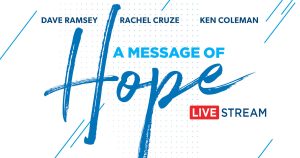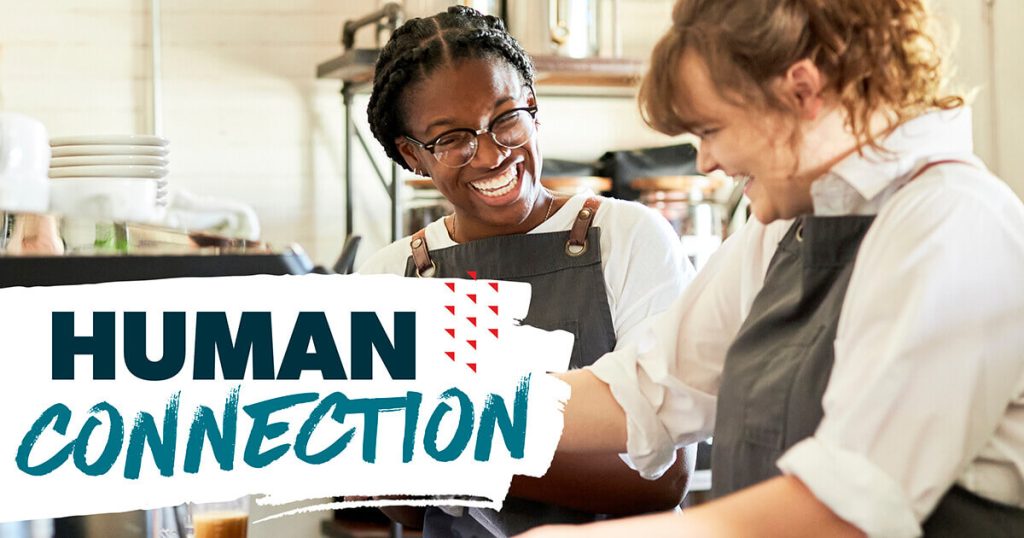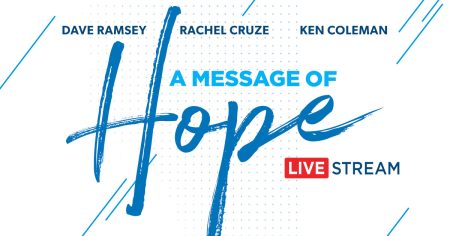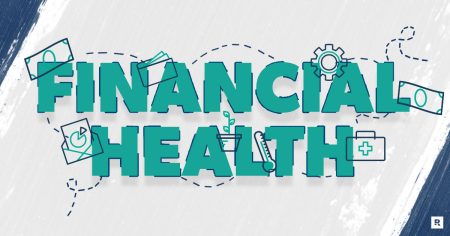We live in a strange world. We communicate without talking. We fight without throwing a punch. We celebrate milestones with tiny digital hearts and thumbs-up emojis. And as our digital interactions skyrocket, the data shows we’re losing real human connection. Millions of us have 1,000 “friends” online but no one who can help us move our couch.
In 2019, three in five Americans described themselves as lonely, and this was before the pandemic collapsed our social lives.1 In the fall of 2020, Harvard sent out a survey and found that things are getting worse—especially among specific groups. Half of new mothers and six out of 10 young adults (aged 18–25) say they are “miserably” lonely.2
Our independence is built into our cultural identity. We come from a legacy of bootstraps, lone cowboys and figuring things out for ourselves. But researchers, mental health professionals and public officials agree: Many Western countries are facing a social epidemic that’s devastating for our well-being. Simply put: Loneliness is killing us. The stress of disconnection contributes to addiction, ADHD, anxiety, depression, heart disease, obesity and suppressed immune systems . . . just to name a few.3,4
We must work to make this right. The stakes are too high. But what do we even mean by human connection? What does it look like?
What Is Human Connection?
Human connection is when two or more people choose to engage in vulnerable interactions where each person is heard, seen, known and valued. You’re connecting with others if you feel better about yourself or the world after you’ve been with them. At the same time, connection is a risk because people may accept you, challenge you, love you, or call you out.
Connection is a disposition you have toward people—more of a mindset than a relationship status. It’s the way you treat the friends you’ve had for 20 years, and your kids, and your spouse, and the person in the Burger King checkout line. Do you aim to really see, know and value people? And do you let others see, know and value you?
For your closest relationships, I like to sum it up this way: Connection is being fully known and fully loved. Sadly, most of us believe that we have to choose between being known and loved. We hide and edit the parts of ourselves that have gotten us hurt before. We tell ourselves stories like, If she only knew about ____, she’d leave in a heartbeat. We live in the shallow end of our relationships, afraid to go deep because of the potential consequences.
“For your closest relationships, I like to sum it up this way: Human connection is being fully known and fully loved.”
-Dr. John Delony
But real connection is like scuba diving. You simply cannot stay on the surface if you want to have rich and meaningful relationships.
Let’s unpack this a little more by talking through what human connection is—and what it’s not.
What Human Connection Is NOT
Human connection is not perfect and comfortable.
Close and intimate relationships sound like rainbows and butterflies, but they’re actually super messy. Sooner or later, you’re going to screw it up. You’re going to be disappointed. But a messy relationship doesn’t always mean you’re doing something wrong—in fact, it might mean you’re doing something right.
Human connection is not digital.
Snapchat, TikTok, Twitter, Instagram, Facebook and any other platform I’m not cool enough to know about do not foster human connection. They can act as a starting point or provide information updates (see next point), but they don’t even come close to the depth and excitement of connection and conversation with a real human.
Want to build a non-anxious life? Learn how in Dr. John Delony’s new book.
Human connection is not an exchange of information.
We live in a data-obsessed, information-driven world. We spend much of our days simply passing along information, but communication doesn’t always equal connection. I can text my wife “I love you” all day long, but actually holding her face and looking in her eyes and saying “I love you” is an intimate, connected experience. And it’s risky.
Human connection is not one-sided.
My friend and fellow mental health professional Chip Dodd likes to say that relationships are not transactional—they’re transformational. Relationships should be mutually life-giving—not soul-sucking and toxic. That being said, you can choose to go first and initiate connection with others. But at the end of the day, you cannot connect with someone who doesn’t want to connect with you.
Human connection does not take place in an echo chamber.
Our default mode as human beings is to find people who act and think and look just like us and make them our friends. But true connection happens when we reach out and understand people who are different from us (newsflash: that’s everyone) and engage with them, despite those differences. Connection is often uncomfortable because it both challenges and encourages us.
Human connection is not proximity.
You can be close to someone physically but not be connected to them. If you’re married, you know what it’s like to be in the middle of a fight or struggling to get on the same page: That six-inch space between you in bed can feel like 1,000 miles. I’ve mastered the art of disappearing at the dinner table or being completely alone in a crowded room. Connection needs proximity, but proximity does not guarantee connection.
What Human Connection IS
Human connection is something that can be cultivated and practiced.
One of the big myths we’ve bought into about relationships is that you’re stuck with the skills you were born with or the example that your family gave you. Negative! Relationship skills can be learned and practiced.
If you have a hard time making or keeping friends, or feel horribly awkward at parties, or long for a more intimate connection with your partner, you can learn skills that will help you get there. You can learn to listen, ask good questions, plan ahead, rearrange your schedule to prioritize people . . . the list goes on. You’re not stuck.
Human connection is risky.
As I said above, all relationships start with risk. Whenever we choose to expose ourselves—to be fully known—we run the risk of also being hurt. In fact, I can guarantee you that you will hurt and be hurt if you’re doing relationships well. But the risk is what makes it so exciting and scary, and ultimately, so beautiful.
Human connection is sharing the gift of presence.
Connection is about other people—not you. It’s about hearing each other, digging below the surface, and choosing to truly understand someone’s picture of reality. You cannot be connected with someone if you’re distracted by your phone or letting your mind wander. You cannot be connected to someone if you’re always waiting for your turn to speak or to tell your version of a story they’re telling. Even if you’re just sitting with each other in silence, being fully present is absolutely essential for connection.
Human connection is active.
Relationships are intentional, and they are work. But it’s a life-giving, soul-filling kind of work. Connecting with people requires thoughtful planning. It requires spontaneity. You’re always investing, rebuilding, expanding and excavating. You’re saying, “I’m sorry,” saying, “That hurt,” and saying, “You know . . . let’s go for it!”
How to Connect With People
Learning to connect with people is a lifelong adventure. It’s going to look different for each friendship and community—family, work, church, city, nation—but here are a few practices to help steer you in the right direction.
1. Take care of yourself.
Often, we have a hard time connecting with people because we’re weighed down by past pain. We choose to hold on to past traumas, cling to unhealthy relationships, and ignore our physical and relational health. We loop negative stories in our minds, like I’m no good at making friends. If my mom didn’t want me, surely no one else does. I’m too loud, too unattractive, and too introverted.
If you remember nothing else from this article, please hear me on this: You are worth having deep, life-giving relationships. Do whatever it takes to be well and learn new skills. Do what it takes to heal, even if that means working with a therapist.
2. Be intentional about scheduling time with people.
Quality time comes from quantity time. If you want connection, make time for it. Turn off Netflix, pick up your phone, and call a buddy to invite him over for a drink or chips and salsa. Stop spending your nights and weekends checking in on work, and instead have friends over for dinner or take your kids to a park and throw water balloons at them. Make time for people.
3. Put screens down.
Technology is often counterproductive to connection. As much as possible, choose movement and/or conversation with people over screen time. A new rule in my home is this: When someone speaks, all phones go down and all eyes go to the person. Even if I put my phone down and look my kids in the eye only long enough to tell them that I need to finish a text message or an internet search, I want everyone in my home to feel more valuable than a flashy metal box.
4. Look people in the eye.
This one is pretty basic, but it makes an incredible difference in how connected you feel to someone. I said earlier that part of connection is being seen—and I mean this in both the literal and metaphorical sense. Eye contact is a simple and powerful way to create connection. And while you’re looking people in the eye, put down your screens and take out your headphones or earbuds. Physically demonstrate that you’re connected.
5. Ask questions, listen, then ask more questions.
When people are talking to you, pay attention. Listen. Focus on what they’re saying. Ask follow-up questions. Dig deeper. Show people you care by practicing the art of conversation.
6. When appropriate, be physically affectionate.
Our bodies crave physical touch. When appropriate (don’t be a creep or an idiot), ask for permission to give someone a hug, grab their hand, or pat them on the back. If you’re in a romantic or parent relationship, cuddle on the couch or spend time in extended embrace. If you’re married, make sex a priority—especially if you’ve been together a while. You have to practice desire for each other.
7. Extend lots of grace and forgiveness.
Remember: Relationships are risky, and they are messy. We live in a “cancel culture” that is constantly putting people on trial, scrutinizing their every move, and giving people death sentences for their first offense. Be different. Forgive. Be hospitable. Extend grace and compassion and forgiveness to people‚ just like you’d want someone to do for you. (This is all part of being emotionally intelligent.) Redemption is the best part of every good story.
8. Be an involved member of groups that matter to you.
Connection should first happen in our most intimate circles with friends and family. But eventually, we should all consider how we can be an engaged member of the larger community around us. From church to school to nonprofits to local politics, follow the thread of interest that connects you to a group of people you care about. Be present. Be engaged. Let your walls down. Remember: Connection is a choice (and proximity alone won’t do the trick).
Build Deeper Connection
Although I’ve just written an article on the topic of connection, I want to close with this: I’m still learning. I’m still in process. We all are.
You are worthy of human connection—the kind of friendships that keep you up past midnight in deep discussion, make you laugh so hard you pee your pants, and push you to take risks and grow and change.
If you want to go deeper with the people in your life, I invite you to check out my new book, Building a Non-Anxious Life. In the book, you’ll learn how to make the intentional choice to choose connection and live a more peaceful, joyful life. You can start reading for free today.
Read the full article here










